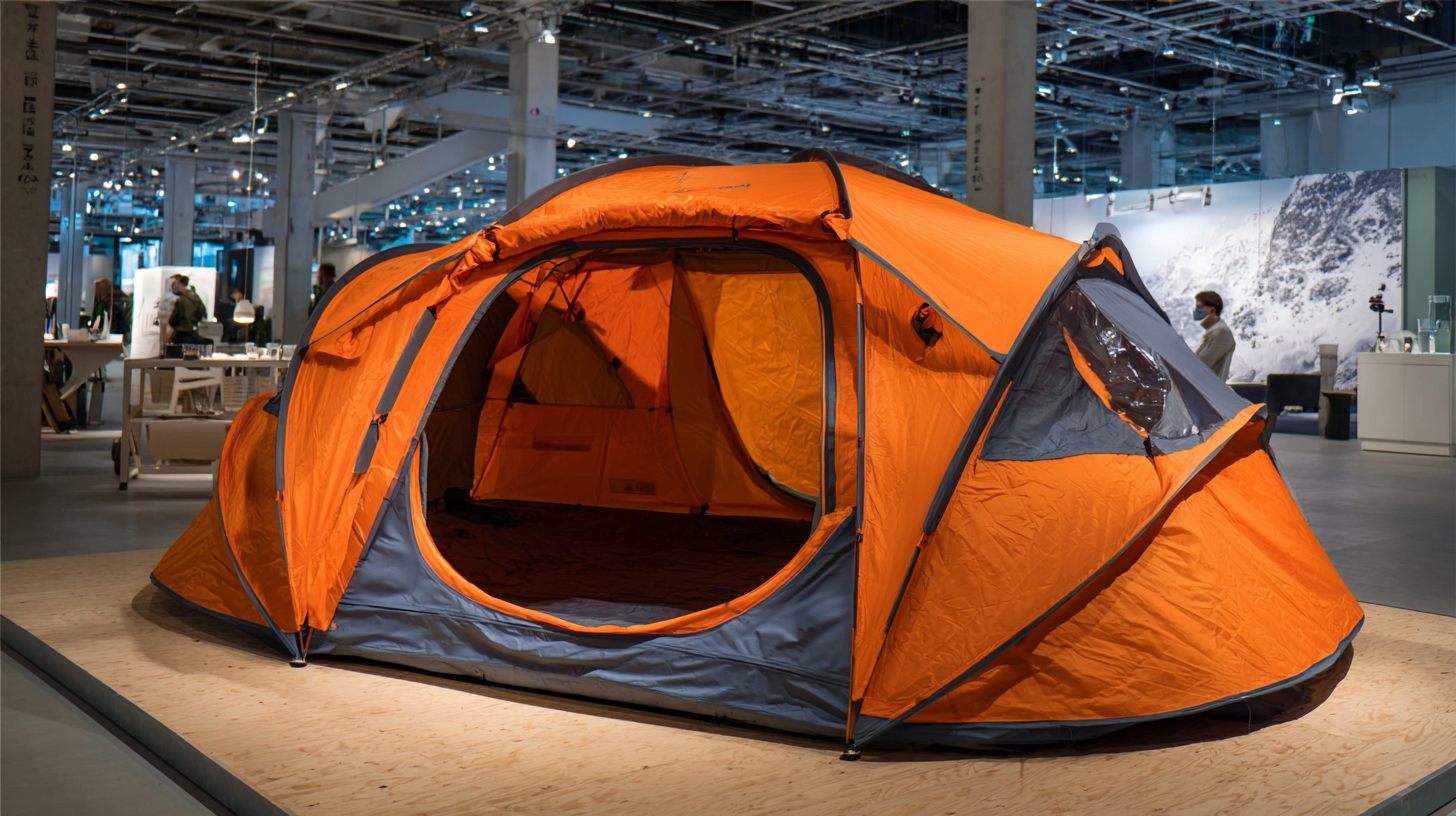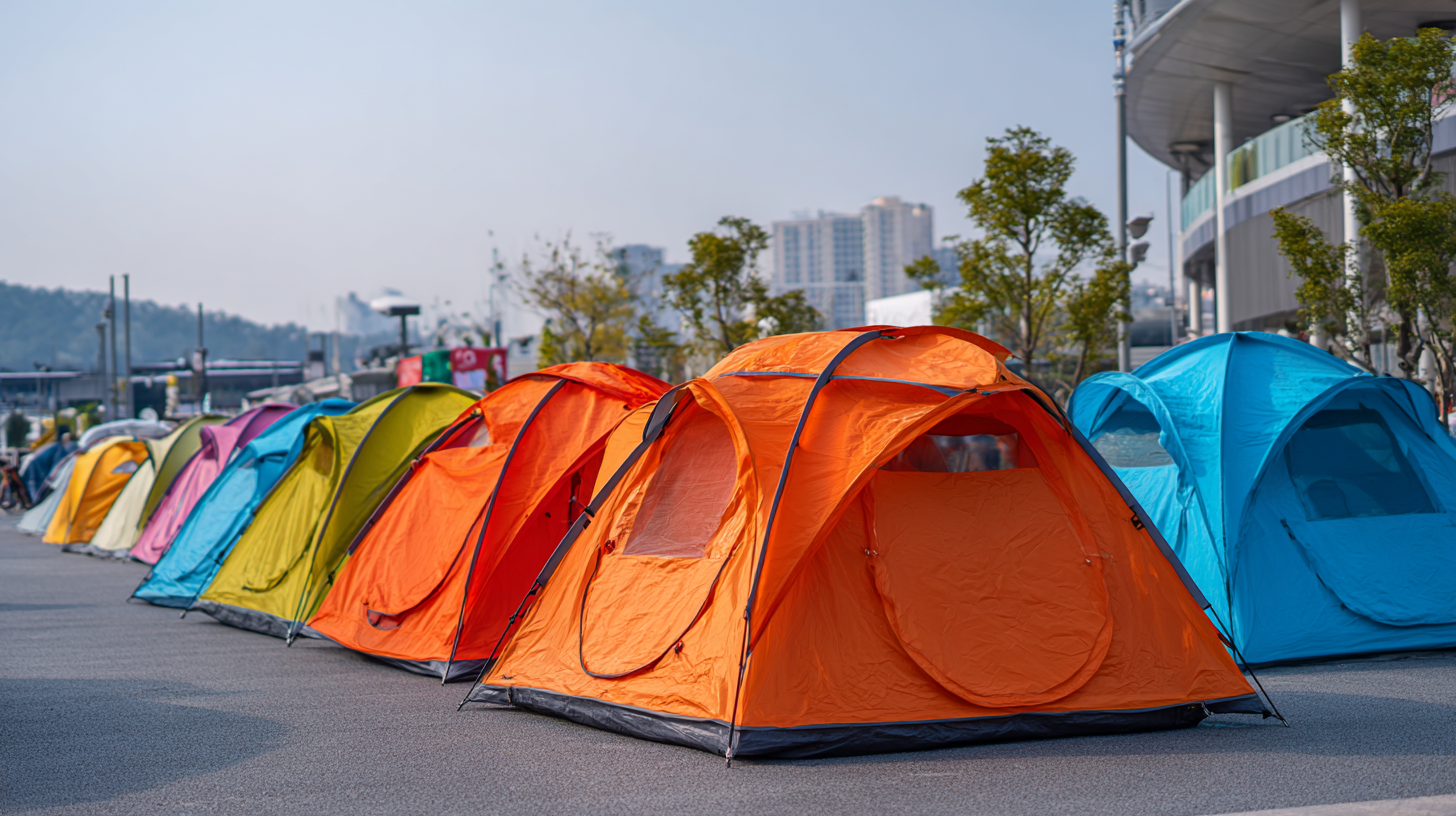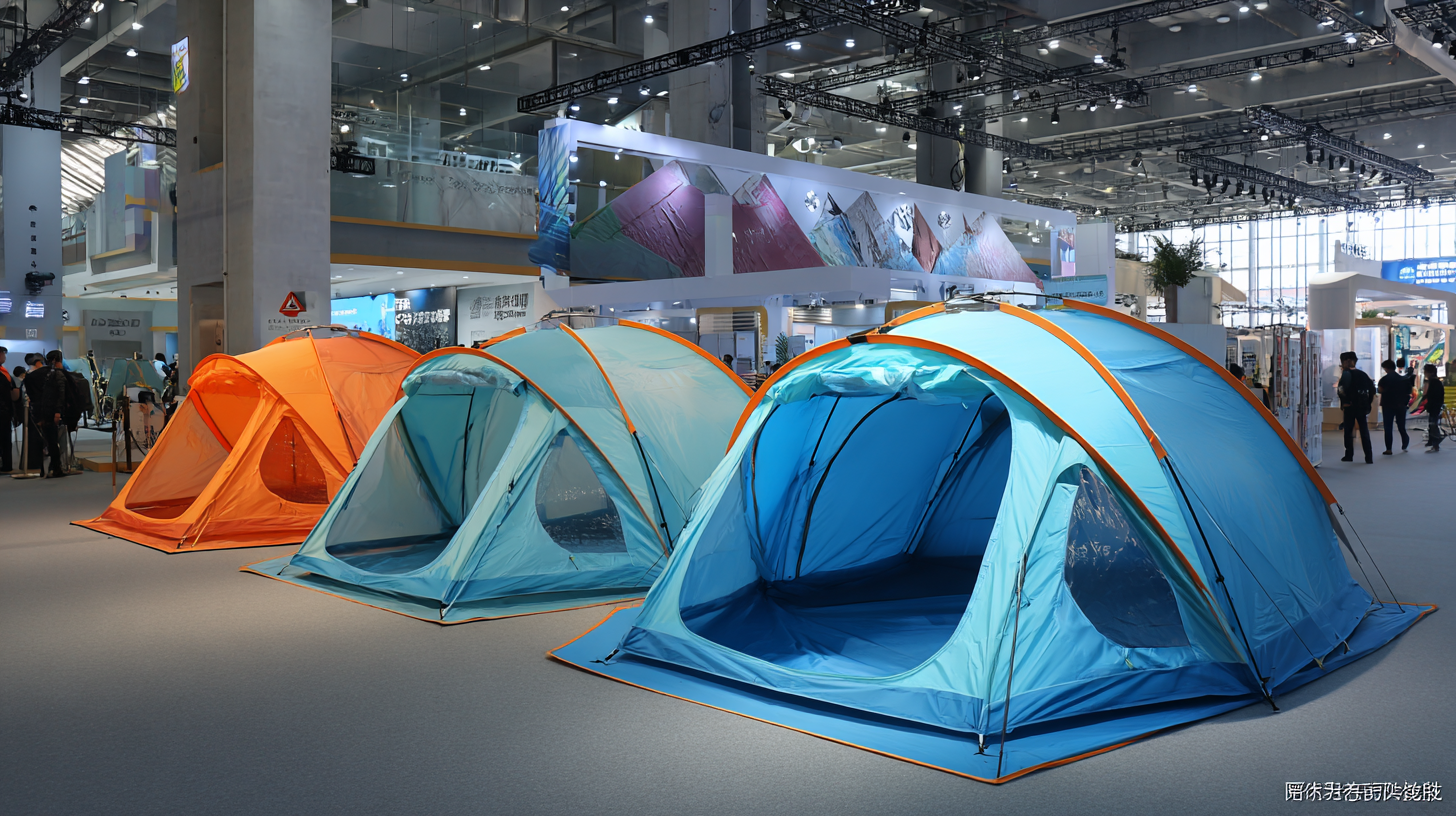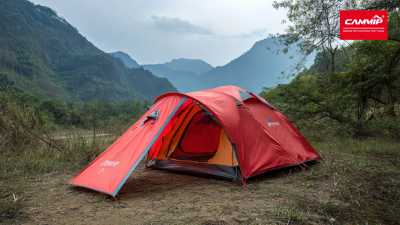Leave Your Message
-
E-mail
-
Whatsapp
The 138th Canton Fair in 2025 marks a significant milestone in the realm of international trade and industry showcases, promising to redefine the way businesses connect and present their innovations. One of the standout features of this year's fair is the integration of Pop Up Tents, which serve as versatile and dynamic presentation spaces.
 These innovative structures not only enhance the visual appeal of exhibits but also adapt to the fluctuating demands of attendees and exhibitors alike. As industries evolve and consumer preferences shift, the use of Pop Up Tents at such prestigious events is indicative of broader trends towards flexibility and accessibility in marketing strategies. This exploration will delve into how these temporary installations are influencing industry trends, shaping business interactions, and redefining the exhibition experience on a global scale.
These innovative structures not only enhance the visual appeal of exhibits but also adapt to the fluctuating demands of attendees and exhibitors alike. As industries evolve and consumer preferences shift, the use of Pop Up Tents at such prestigious events is indicative of broader trends towards flexibility and accessibility in marketing strategies. This exploration will delve into how these temporary installations are influencing industry trends, shaping business interactions, and redefining the exhibition experience on a global scale.
The 138th Canton Fair in 2025 has embraced pop-up tents as a dynamic tool for enhancing exhibitor engagement. According to a recent industry report by MarketsandMarkets, the global market for portable exhibition solutions is projected to grow by 12.3% annually, driven in part by the increasing demand for flexible and cost-effective exhibition setups. Pop-up tents not only provide a compact and easily transportable solution but also encourage interactive experiences that draw in attendees. This trend is particularly relevant in light of recent findings from Event Marketing 2022, which indicate that 70% of exhibitors reported improved engagement metrics when utilizing innovative display methods.
Exhibitors at the Canton Fair are leveraging pop-up tents to create immersive environments that captivate visitors. These tents allow for customizable designs that reflect brand aesthetics while facilitating direct interaction with products. The benefits of such engagement strategies are further reinforced by a survey conducted by the Event Marketing Institute, revealing that brands that focus on experiential marketing see a conversion rate increase of up to 18%. As businesses aim to optimize their presence at trade shows, integrating pop-up tents appears to be a strategic move to enhance visibility and foster meaningful connections with potential clients.

The 138th Canton Fair in 2025 promises to showcase innovative design trends in pop-up tents that are set to redefine trade show experiences. The evolution of these tents has increasingly focused on sustainability, functionality, and aesthetic appeal. Designers are now incorporating eco-friendly materials, modular designs, and vibrant colors to attract exhibitors and visitors alike. Furthermore, features such as built-in lighting and smart technology integration are becoming commonplace, creating immersive environments that enhance product visibility and engagement.
When considering the design of your pop-up tent for trade shows, remember to prioritize versatility. Opt for lightweight materials that are easy to transport and assemble, while also ensuring weather resistance for outdoor events. Additionally, invest in strong branding elements—like custom graphics and logos—on your tent to maximize visibility and leave a lasting impression.
Incorporating interactive elements, such as digital screens or QR code integrations, can also elevate the viewer experience. Engaging attendees with visually attractive designs and interactive features not only draws people in but also encourages them to linger longer, increasing the chances of successful networking and sales.
| Trend Category | Key Features | Material Used | Sustainability Factor | Estimated Price Range |
|---|---|---|---|---|
| Modular Design | Flexible configurations, easy assembly | Aluminum frame, waterproof fabric | Recyclable materials, low carbon footprint | $200 - $800 |
| Digital Integration | Built-in screens, Wi-Fi connectivity | High-tech synthetic fabrics | Energy-efficient tech solutions | $300 - $1200 |
| Eco-Friendly Choices | Biodegradable materials, solar-powered options | Organic cotton, recycled plastics | Fully sustainable products | $250 - $1000 |
| Custom Branding | Personalized designs for business promotion | Durable vinyl, fade-resistant inks | Introducing eco-friendly inks | $400 - $1500 |
| Weather Resistance | Enhanced stability, wind and rain resistance | Heavy-duty canvas, UV-resistant coatings | Contributes to longevity of product | $350 - $1300 |
The introduction of pop-up tents at events like the 138th Canton Fair in 2025 has drawn significant interest, prompting an analysis of consumer response to this innovative product. As consumers seek convenience and flexibility, the appeal of pop-up tents lies in their ease of transportation and quick setup. These tents offer a practical solution for vendors and visitors alike, enhancing the overall experience at trade fairs where space can be limited.
Recent events, such as the Eastern Michigan State Fair, have highlighted the importance of providing comfortable environments for attendees, showcasing the need for initiatives like cooling systems in multi-purpose setups. Similarly, the successful turnout at the NC State Fair illustrates the desire for engaging experiences that cater to consumer needs.
As pop-up tents become a staple at fairs and exhibitions, understanding consumer sentiment will be crucial in shaping future designs and functionalities, ultimately influencing industry trends and trade practices moving forward.
The 138th Canton Fair in 2025 is set to highlight innovative practices in pop-up tent manufacturing, particularly in the realm of sustainability. With growing environmental concerns, the tent manufacturing industry is increasingly adopting sustainable practices. Reports indicate that the global market for sustainable camping products is projected to reach $78 billion by 2026, growing significantly as consumers demand eco-friendly options. This trend aligns with the larger push for sustainability seen at major events like the Canton Fair, where manufacturers are expected to showcase tents made from recycled materials, biodegradable fabrics, and low-impact production processes.

As industry leaders recognize the importance of eco-friendly practices, the push for greener manufacturing in the pop-up tent sector is evident. Sustainability reports indicate that tents that incorporate recycled components and adhere to environmental standards are favored by businesses and consumers alike. Notably, tents that meet certifications like Bluesign are gaining traction, as they assure customers that the products were manufactured with minimal environmental impact. The spotlight on sustainability at the Canton Fair will likely influence market trends, encouraging manufacturers to prioritize eco-conscious innovation and furthering the industry’s commitment to responsible production practices.
As we look forward to the 138th Canton Fair in 2025, the emergence of pop-up tents is set to significantly transform industry norms. Recent studies highlight that the global pop-up tent market is projected to grow at a CAGR of 8.1%, reaching an estimated value of $1.3 billion by 2026. This growth is driven by their versatility, ease of transport, and cost-effectiveness, which perfectly align with the evolving needs of businesses looking for flexible display solutions.
In 2025, the integration of pop-up tents in trade fairs will not only enhance branding opportunities but also influence design trends across the industry. Exhibitors are increasingly recognizing the importance of creating engaging spaces, leading to a shift in traditional booth setups. Industry reports suggest that 65% of exhibitors who utilized portable display solutions like pop-up tents reported increased visitor engagement and foot traffic at their booths.
Tips: When utilizing pop-up tents, consider customizing them with your brand's colors and logos to maximize visibility. Additionally, ensure your setup allows for easy interaction with visitors by incorporating seating or product showcases that encourage exploration and engagement. By embracing these strategies, businesses can effectively harness the upward trend of pop-up tents in trade shows and beyond.






